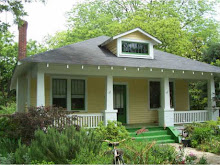Here are some shots of the lights as they were. The long chains are the pendant fixtures from the bedrooms, hall and breakfast room.

Close up of the canopies of the pendant fixtures.

This little one is the bathroom sconce. It was totally painted, including the fitter (shade holder).

First things first... I've taken apart lamps before, but never anything quite this old. I did some research on the internet first, looking specifically into antique lighting. One page I found talked about "being careful not to disturb the black paper lining". Oh, you mean than crumbling black powder that dumped everywhere when I opened the socket? More research shows that the old paper socket liners were asbestos. Don't worry, I had on gloves and a mask.

Here is the pan chandelier from the living room. More of the same disintegrating cloth covered wires. Look closely for the electrical tape. classy!

It didn't take too long to open up all the lamps. We have four pendant lamps, one sconce, and two pan chandeliers with four lights each, for a total of 13 sockets. I found a website* where you can buy lamp parts. I'm waiting for my wire and replacement parts to arrive.

At the recommendation of the internet I picked up a can of "Citristrip", a "safer" paint stripper which has less fumes. I used an old plastic storage tub as an impromptu spray booth. I still sprayed it outside because the fake orange smell was too strong.

The Citristrip leaves an orange film on the paint. You can easily see if you missed any spots. I can see this being great for larger items with vertical surfaces (like a door frame) because it is a gel and sticks to the surface without running down like liquid solvents do.

About two hours later the paint is buckled and coming off the brass. Next it's time to scrape it off!


I scraped most of the paint off with a plastic putty knife. Then I moved to the sink and used 0000 steel wool and a wire brush under running water to remove the rest of the paint. A couple of the canopies had more layers of paint than the others so I had to spray them again and soak overnight. The next day the paint came off easily.

As I'd hoped, the canopies were a beautiful patina underneath all the paint. The bathroom fitter is lighter brass- I think it was painted early on before it had a chance to tarnish. I am going to patina it a little darker so it matches it's base. There are only four fitters because one fixture was missing it's original (it had no shade). I ordered a replacement bell shaped fitter (not shown) that is remarkably similar to the originals. It, too, is bright brass and I plan to darken it with the patina solution.

The newly cleaned bathroom sconce. What an improvement!

The other canopies are speckled, but are also beautiful.

Stay tuned for photos of the rewiring process and how they turn out in the end!
*Note: I originally ordered a bunch of lamp parts from www.jalanes.com, but it took three weeks, half my order never arrived, no one ever returned my emails, and they were difficult to get on the phone so I cancelled the order. I ended up ordering from www.grandbrass.com, which turned out to be cheaper too.
































